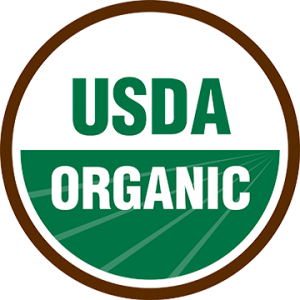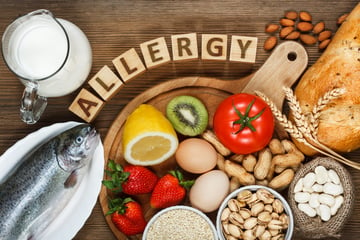Over the last few decades, the food industry has seen a rise in Americans who want to know more about their food: Where it’s from, how it’s grown, what’s in it, etc. Due in part to this trend, the United States Department of Agriculture’s (USDA) organic seal on product packaging has become increasingly prevalent and the use of the term “organic” is commonplace.
This blog will cover when you can use the term “organic,” your placement options, and if it’s appropriate to use the USDA organic seal.
When you can use the term “organic” on your packaging
If you want to use the term “organic” on your label, the exact wording you have to use depends on the amount of organic ingredients your product contains.
These are your options:
100% Organic
A product labeled as “100% organic” must be made up of only 100 percent organically produced ingredients. (This does not include water and salt, which are considered natural product by the USDA and they are not required to meet any specific “organic” parameters.)
What constitutes organic is spelled out in the CFR §205.600-205.606, but it essentially means grown or produced using natural substances and mechanical or biological farming methods.
Placement: You can include the USDA organic seal and a “100% organic” claim on the principal display panel (or PDP, the part of the container or package most likely to be seen by the consumer — usually the front). If you use the seal or a claim, you must identify organic ingredients with an asterisk or other mark in your ingredient statement.
Organic
To use “organic” on your packaging, your product must contain at least 95 percent organically produced ingredients. The remaining ingredients can be nonorganic IF they aren’t available in organic form, or if they are allowed substances/ingredients per the National List. (Examples would include colors produced from agricultural products and other processing or thickening agents. We suggest that you consult the list before making any claims.)
Placement: You can include the USDA organic seal and an “organic” claim on the PDP. If you use the seal or claim, you must identify organic ingredients in your ingredient statement with an asterisk or other identifiable mark.
Made with Organic ______
If your product contains at least 70 percent organic ingredients total, you can still use a claim: “Made with organic ____.” Example: “This product is made with organic lavender.” It’s important to note that you have to expressly state which ingredients are organic, and you cannot make a blanket statement such as, “Made with organic ingredients.”
Placement: You can state “Made with organic (up to three specific ingredients or ingredient categories)” on the PDP, but you may not use the USDA organic seal or otherwise represent the product as organic. If you use this claim, you must identify organic ingredients in your ingredient statement with an asterisk or other mark.
Specific organic ingredients
If your product contains less than 70 percent organic ingredients, you may still list organic ingredients in your ingredient statement. Example: “Ingredients: Garbanzo beans, organic garlic, tahini, organic olive oil, water, and salt.”
Placement: You cannot use the USDA Organic seal or the claim “organic” anywhere on the PDP. You can only use the word “organic” within the ingredient statement.
When you can use the USDA Organic Seal
In order to use the USDA organic seal, your product must meet requirements for the “100 percent organic” or “organic” claims as explained above. Products with less than 95 percent organic ingredients may not use the seal on product packaging.
Seal Format Requirements
If you use the USDA seal, you must replicate the form and design shown in the example to the right, and the seal must be printed legibly and conspicuously.
Specs:
- A white background with a brown outer circle and with the term, “USDA,” in green overlaying a white upper semicircle and with the term, “organic,” in white overlaying the green lower half circle; or
- A white or transparent background with a black outer circle and black “USDA” on a white or transparent upper half of the circle with a contrasting white or transparent “organic” on the black lower half circle.
- The green or black lower half circle may have four light lines running from left to right and disappearing at the point on the right horizon to resemble a cultivated field.
For further information on the definition of the term organic please consult Subpart D of the eCFR.
Genesis R&D Supplements now offers organic percentage tracking to make it easy to see what definitions you meet. This tutorial shows you how that works.

3:58
Tag(s):
Food Labeling





